MusicRadar Verdict
On the amp modelling and build quality side, the DNAfx GiT Pro holds its own in the sub £300 end of the market. And with the selection of effects, there’s plenty to recommend, especially for home players.
Pros
- +
Impressive amp and cab modelling at the this pricepoint.
- +
Wide selection of effects and amp integration options.
- +
Good build quality with relatively large colour screen.
Cons
- -
Lag when switching on effects.
- -
Didn’t integrate well for us with external drive pedals.
MusicRadar's got your back
Harley Benton DNAfx GiT Pro: What is it?
How many options can you handle for your tone? Amps, cabs, multi-effects, virtual power amp tube selection, amp switching… Harley Benton are packing a lot into a relatively small package here, but with a surprisingly large screen. And there’s an expression pedal too. But the DNAfx GiT Pro is not alone.
At £239 and even with all the specs it carries, it seems unfair to pitch the DNAfx GiT Pro against brands who have been in the R&D process of amp modelling for years, and with units priced far higher used by pros. And yet, the multi-effects market is now so competitive we think this unit finds itself rubbing shoulders in the fray for your money with units from the likes of Nux, Mooer and Zoom. So it’s still got some impressing to do to win over an increasingly choosey audience. And of course, us.

The ‘Pro' in the name here indicates its position as the flagship in Harley Benton’s DNAfx GiT line of two units – the latest refinement in the evolution of a brand showing impressive confidence in product rollout in this area. In form and feel it really makes that statement; low profile for a four-switch / expression pedal layout and relatively compact at 345x155mm. With a premium-looking aluminium brushed finish feel and knurled metal knobs, it makes a great first impression.
To be blunt, it looks like something that should be more expensive, and the large, bright and colourful 5" LCD screen already pitches above most we’ve seen in terms of ratio and the clarity that brings. In fact, it’s so well proportioned it's tempting to mistake it for a touchscreen… but for £239, let’s be realistic.
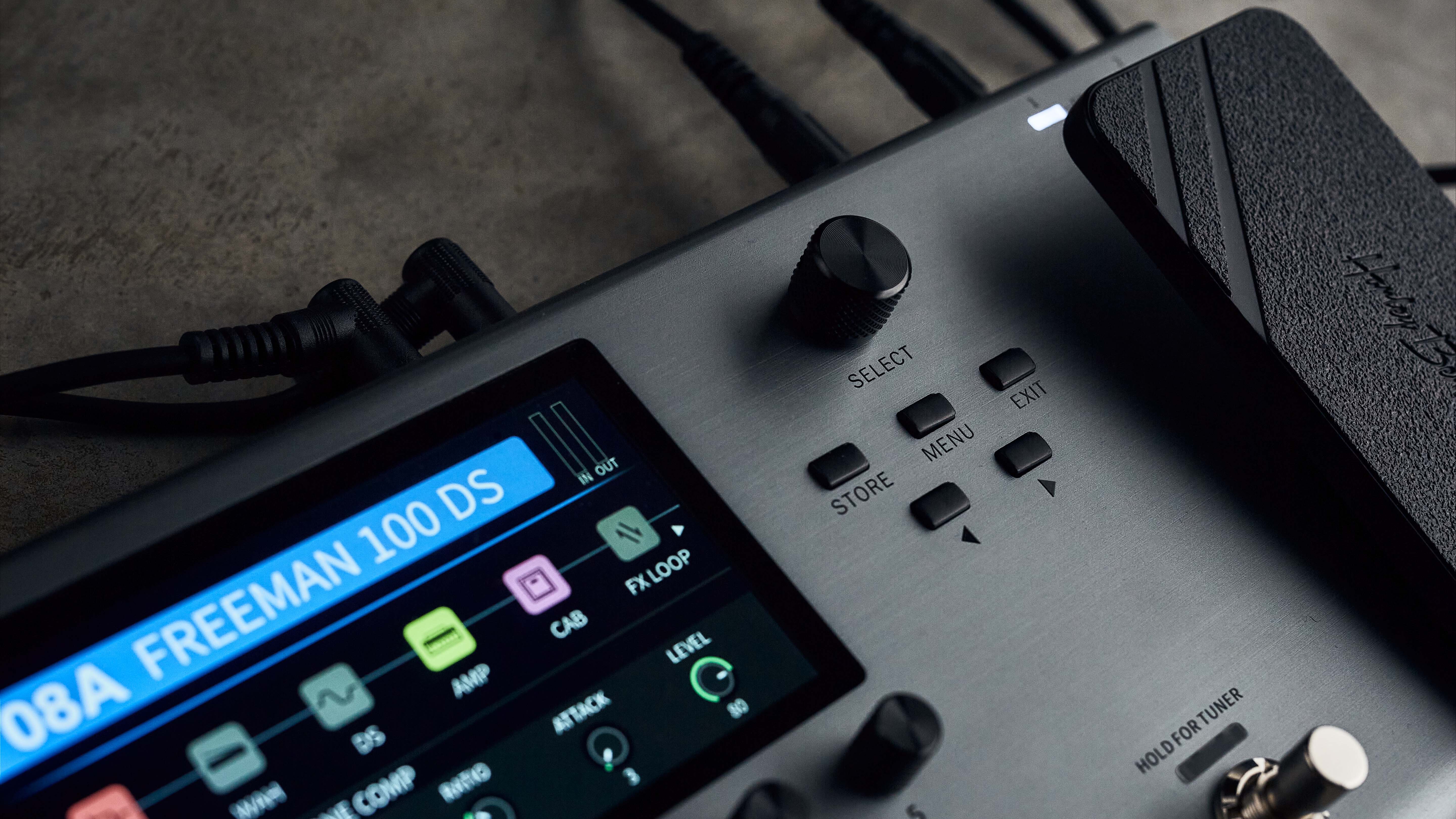
Harley Benton DNAfx GiT Pro: Performance and verdict
We know what you’re going to do when you turn this on and plug it in; head straight to the presets. Before that UK-based players are going to have to sort a UK C13 ‘kettle’ socket to simply power it up as only a European two pin one is supplied. Not a great start, and something we’d like to have seen included, but HB is a German brand and mainland Europe is a much bigger place than the UK so we kind of understand. And we’re hoping most guitarists already carry a spare for their amp.
The physical manual that's included amounts to a quick start guide of two sides of A4 paper, but you can head here for the online in depth instructions. So after you’ve had your fill of the presets and want to edit them, or make your own patches from scratch, you’ll need to take time to get to grips with the user interface to avoid accidentally exiting out of modes all the time.

Go into any preset you can change and audition effects using switch 1, moving between effect blocks with the select knob. You can also assign the three footswitches (the fourth footswitch D is held down to activate tuner and can select switch modes) to activate whatever effect you want from your signal chain.
Want all the hottest music and gear news, reviews, deals, features and more, direct to your inbox? Sign up here.
Footswitch C also activates a looper when held down, with the functions of the footswitches to operate it appearing on the screen – there's even a tap tempo drum beat to play along to which is a nice touch, and useful for working on ideas and timing.

First though, the presets start with the amp selection before moving on to more ambient effects sounds, and even HB's approximations of famous song tones. There’s a feast of models here that are clearly based on iconic and popular amps before you even hear them; ‘Citrus 100’, ‘Archean 50’, Brit J45 and 800, Freeman 100, 5153, Shiver, Ecstatic, Soldier, Cali Rectifier… it doesn’t take Colombo to figure out the sources of inspiration. And indeed the manual spells it out.
There’s 58 channels including clean and overdriven variants with plenty of higher gain models. Add in 31 different cabs, each with four different power amp tube options (as well as the option not to use one), and room settings, there’s a huge choice before we even touch the effects.
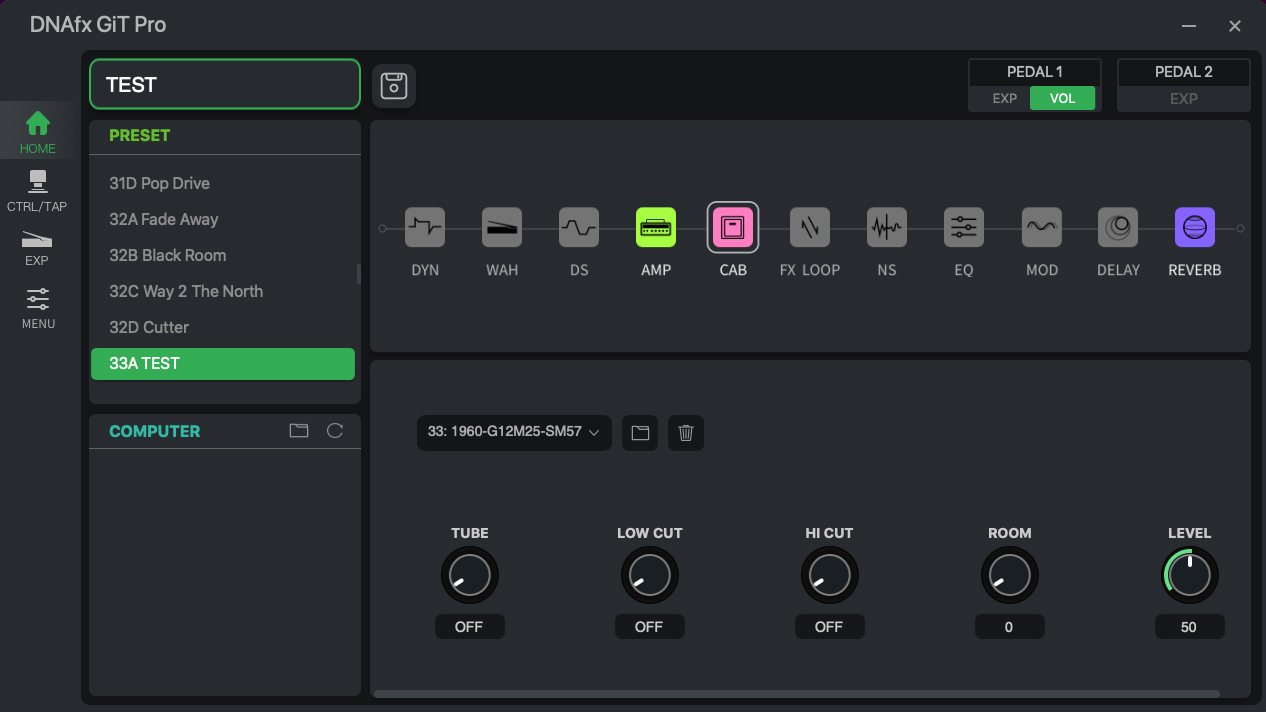
You can also upload third party cab impulse responses to the unit, which we did using Redwirez free Marshall 1960 IRs – taken from an iconic cab with 4 x 25-watt Celestion G12M Greenbacks. This is a breeze using the DNAfx software you can download from the Thomann product page – you simply load your IR into one of the 30 available empty IR cabs slots and it’s there to select.
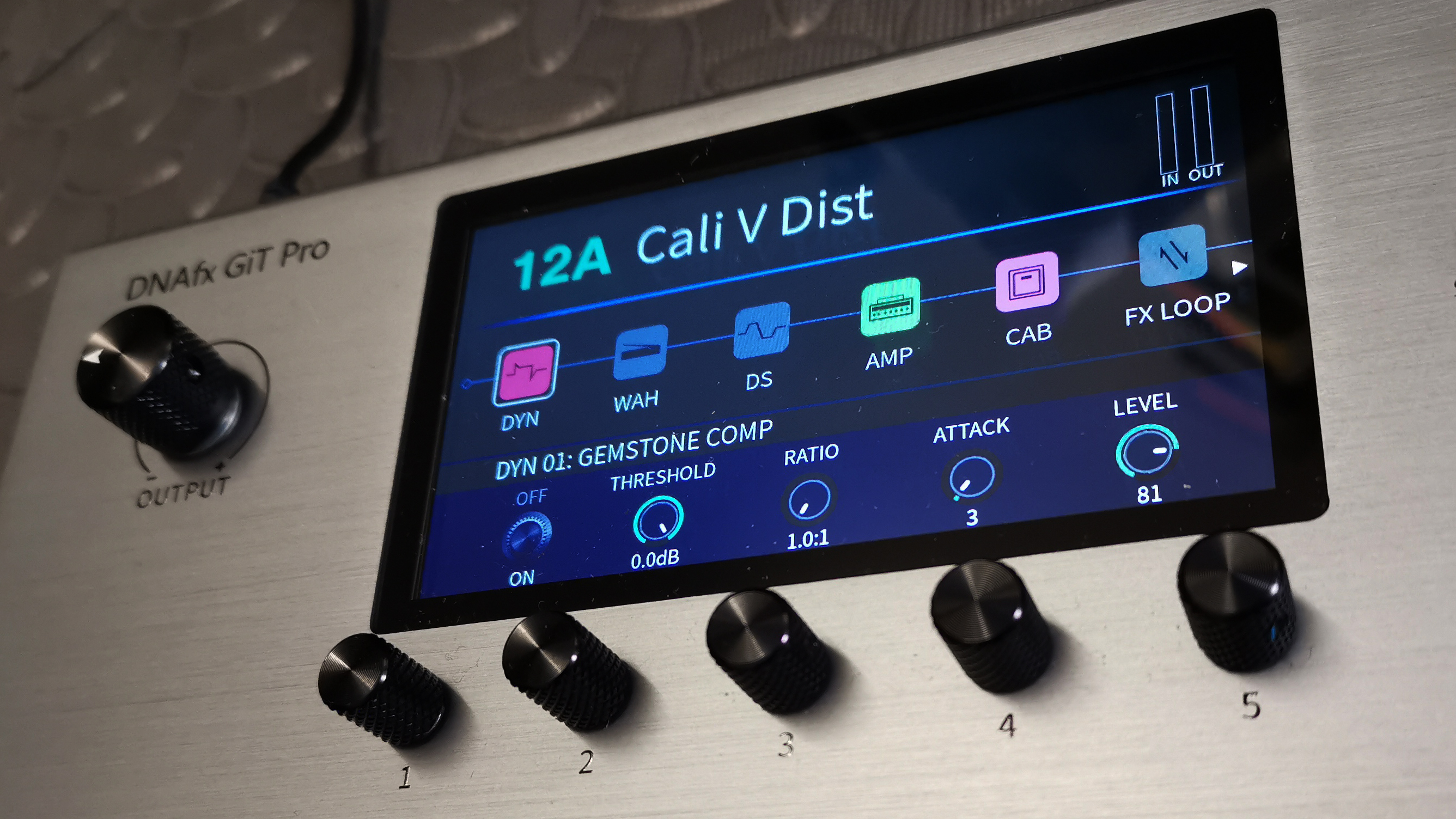
We think judging a multi-effects unit prematurely on its presets is a risky road to head down – and here everything on the high gain side is cooked a little too spicy in the gain and EQ here for our tastes. To try and get a broader perspective, we tinkered and used a selection of guitars; a Fender with Monty’s Full Monty bridge humbucker, a vintage-style P-90 in a Les Paul Junior-style singlecut, plus a Tele and an SG with humbuckers.
We never assume presets show amps and effects models off at their best
We never assume presets show amps and effects models off at their best – and all tastes, pickups and styles differ, after all. But winding things back and tweaking here – trusting our ears through an FRFR cab – pays dividends. This process may at first feel hampered by the fact that every time you audition an amp, the system immediately changes the cab to what it considers a match but there’s an option to turn this off in the menu (another reminder that it's worth reading the PDF manual to save time in the long run).
Some higher gain amps benefitted from the Marshall IRs we loaded in physicality and definition through a Harley Benton FRFR cab and a Line 6 Powercab set to Flat mode proving to be ideal platforms to assess things at higher volumes.
We hear these amp models more as Harley Benton's interpretations of their inspiration's character rather than detailed recreations. And while there aren't the levels of diversity between higher gain models that you hear on more detailed and higher priced competition, what’s here is impressive at this pricepoint, and for classic rock tones we really enjoyed tweaking the Marshall and Orange-style models with different cabs. With these medium gain amps we could control the gain effectively from the guitar and enjoy the level of response these models offer, especially with our two instruments that have '50s-style wiring.
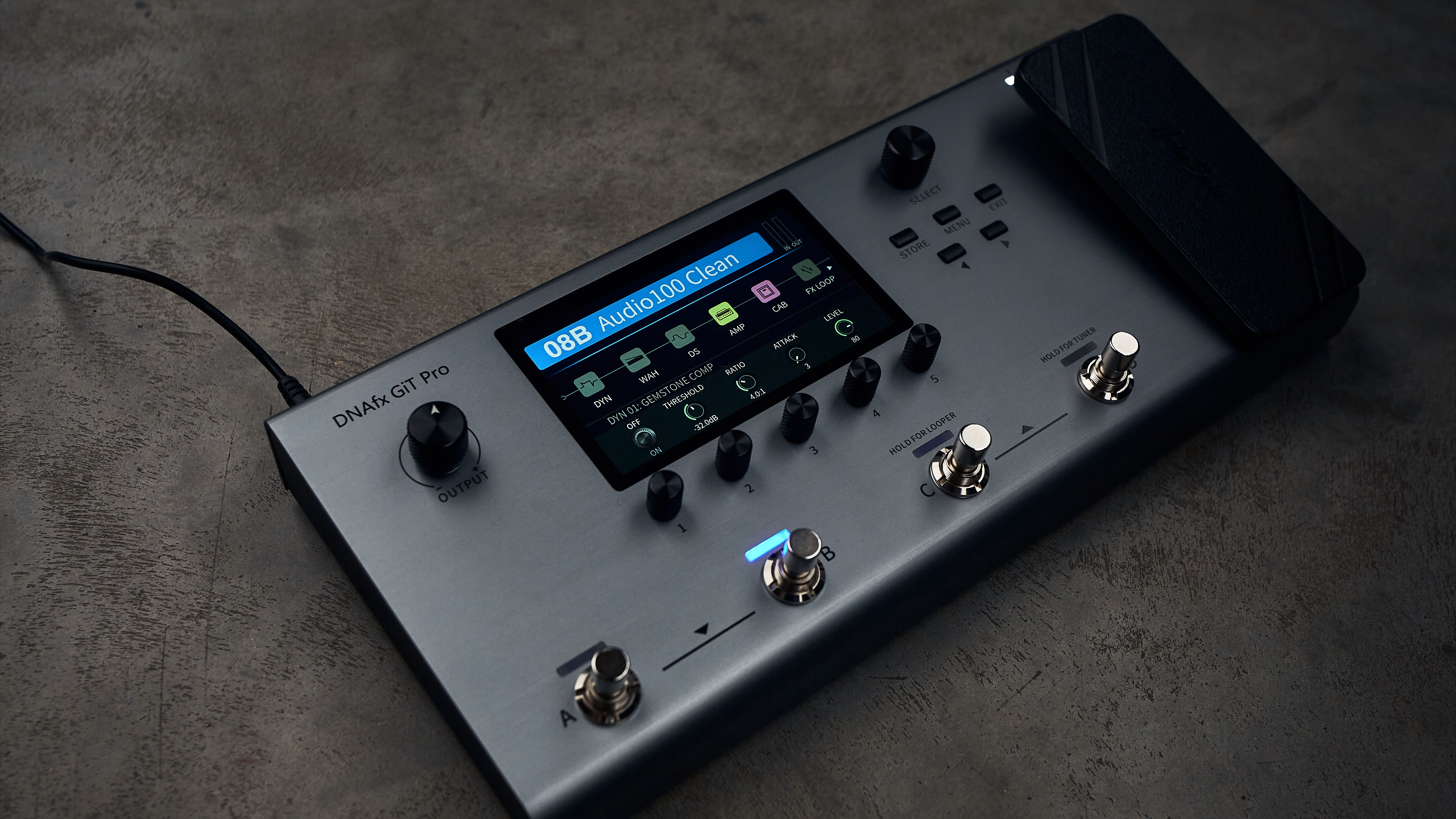
It’s good to see a six-band EQ in the effects list here as it proves to be another useful tool for shaping the EQ
It’s good to see a six-band EQ in the effects list here as it proves to be another useful tool for shaping the EQ – something the higher gain Rectifier and EVH-influenced amp models benefit from in our experience. Elsewhere, don’t expect the deep bespoke parameters of Helix but there’s a good spread of modulations, including pitch effects, that will be a great introduction for players to a world of tones.
While the lack of modulation control on the mod delay drops the ball, and the rotary effect simply doesn’t deliver for us beyond a mild tremolo, it’s generally a decent showing of digital effects here for the price point and a great way for players to be introduced to their potential at a lower price point.
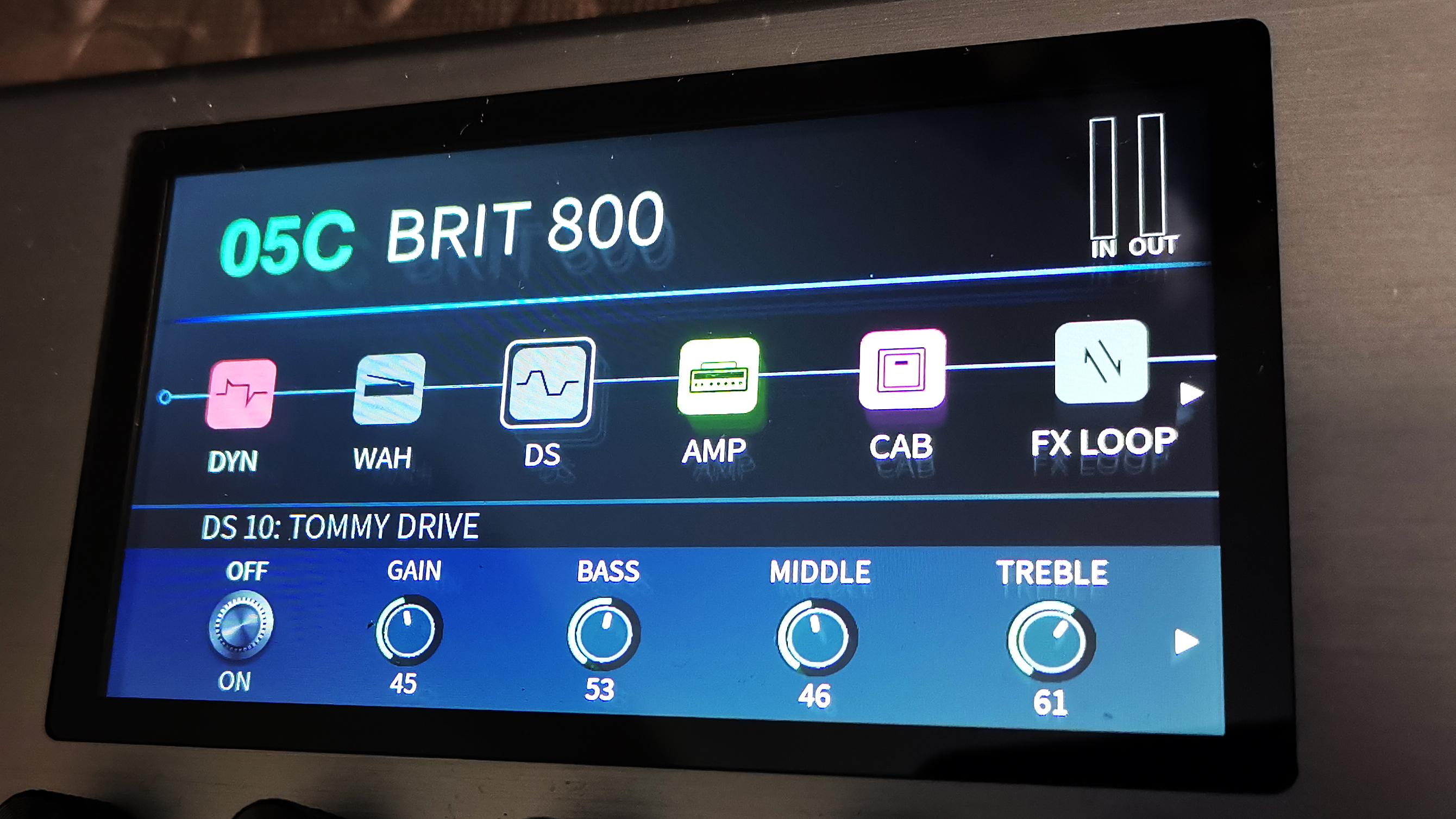
Iconic drives, distortions and fuzzes are represented with pretty universal control parameters, but we found them to be shaped more as distinct flavours rather than accurate recreations; models that are created rather than captured.
The Gold Tone is hotter than a transparent Klon-esque drive to our ears, but is probably one of the better overdrives here and alongside the suggestively-named models including the Black Mouse, MT Zone, Shredder and 808 Screamer and Tommy Drive, there’s a wide palette to try as boosts but we’d advise dialling them back to start with when stacking with amp drive.
We also want to give a shout out to the Slow Gear model in the compression section – drawing influence from the rare Boss 80s effect of the same name, its slow attack works well with delay for moody swells. And it turns out the integrated expression pedal can explore new potential beyond the obvious wah or volume; once you figure out how to get into its settings.
The manual suggests we need to hold down the first three mini knobs for two seconds to enter the expression pedal settings. But nothing happens despite a number of attempts. Instead you can do it via Harley Benton's free DNAfx software.
This allows you to assign the expression pedal to control any of the 11 effects / function types – effectively giving you an extra footswitch to use to bring in delay, for example. A useful feature and we found the software was straightforward and stable to use. We're definitely in the camp that prefer to edit a multi-fx and amp modeller unit from software as we've found it's quicker.
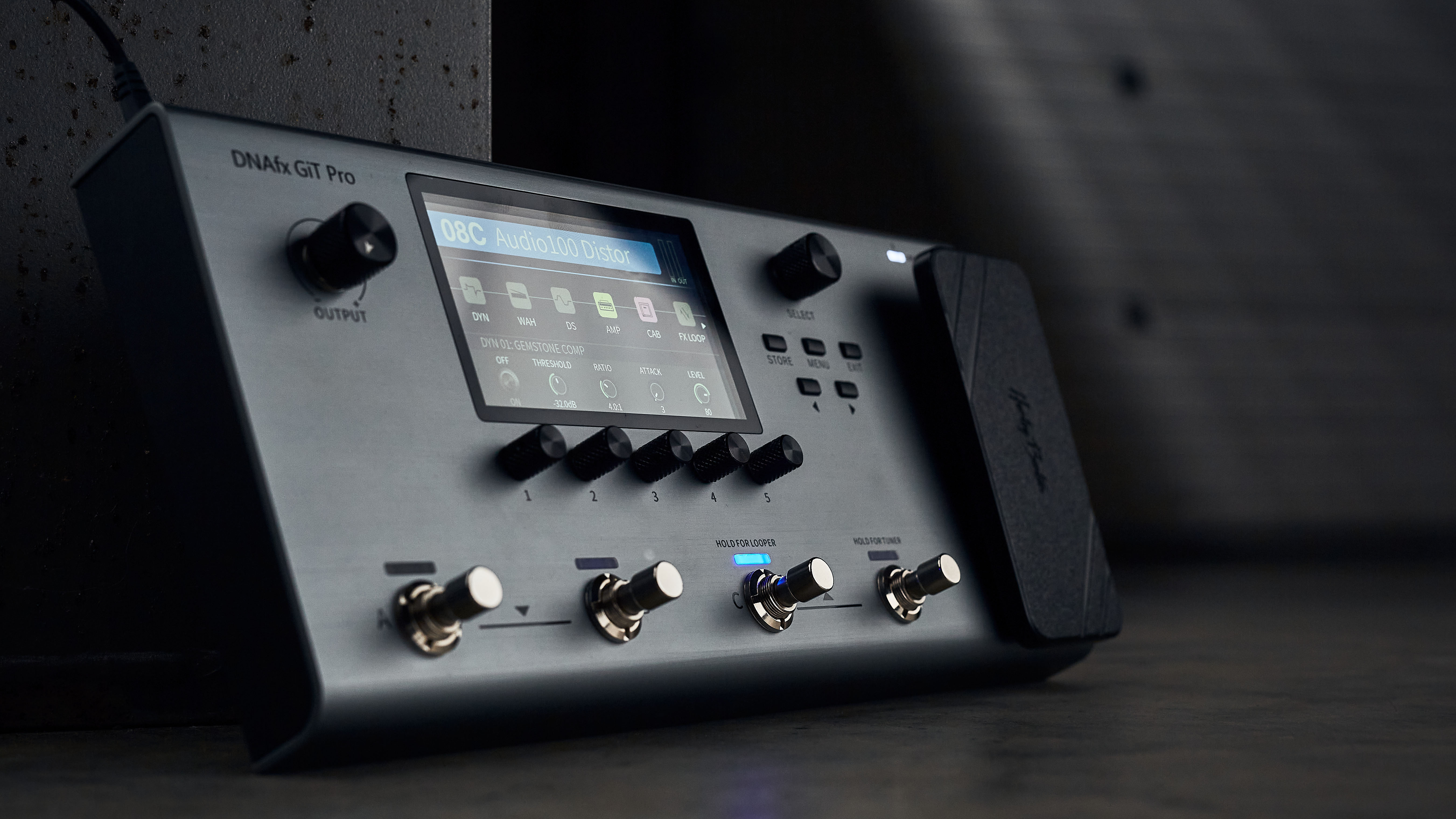
The significant drawback we discovered with using all the effects is the lag when switching on any of them on; it’s more evident than when disengaging them. This is something we’re surprised to see on a multi-effects pedal in 2022, and enough to seriously question this pedal’s usability for the live stage as it simply undermines dynamics. However, we contacted Thomann regarding this issue who have told us that they are aware of it and are working on a fix.
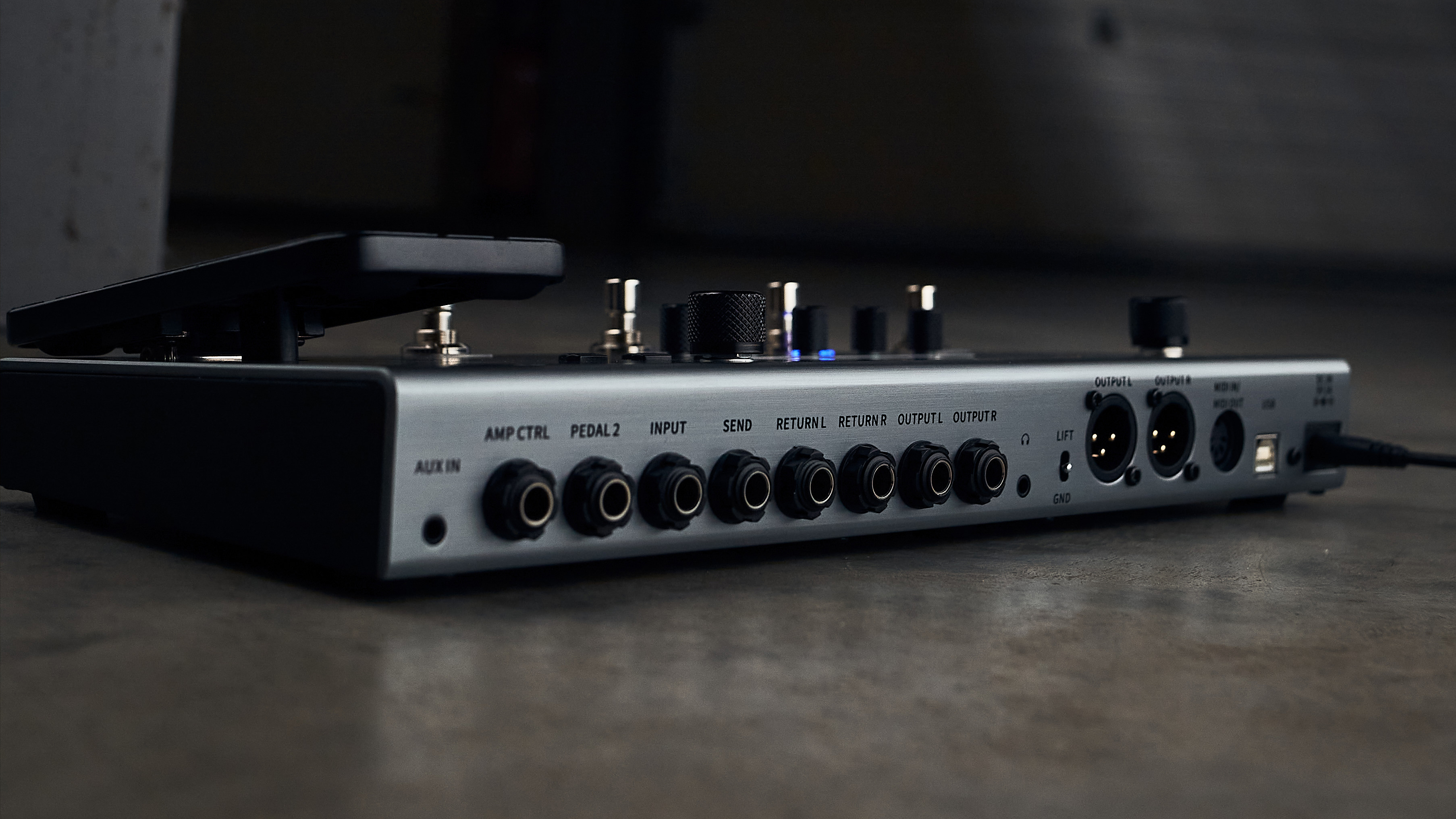
We also encountered a drawback when using our own overdrive pedals into the DNAfx GiT Pro. Though you can lower or increase the input gain levels of your guitar and any other inputs at the same time, and connect pedals to the DNAfx GiT Pro in the effects loop, we were unable to balance the levels efficiently or get a satisfactory sound through the unit with the physical overdrive pedals we tried. Based on this experience, we’d advise approaching this as a standalone solution – and it certainly has the features to be that in theory.
It’s also worth pointing out that although you can move the order of effects in the chains around (with up to 11 in a chain) you can’t have more than one of the same onboard effects type in the same chain either, so no two delays, for example.
Despite these effects-related drawbacks, the DNAfx GiT Pro’s strongest suite as an amp modeller can be further integrated into your rig using the four cable method to replace your own amp’s preamp circuit if you wish. We tried it with our Fender combo and it worked well.
You can also set up an effects loop between the time-based effects and the rest in your chain and disengage the amp models to use your own preamp. And as we noted with interest when it was first announced, DNAfx GiT Pro can also switch your amp’s channels using its Ctrl Amp output to your amp’s footswitch input. Unfortunately, after following the online manual’s directions, we couldn’t get it to work for our two combo amps in testing.

With the MIDI compatibility here there’s some interesting attention to integration with your amp rig but clearly a couple of oversights the effects side currently. The lag issue is a real sticking point for us here that currently holds the DNAfx GiT Pro back from great value status amongst the competition. But we're hoping a fix will address this in the future.
MusicRadar verdict: On the amp modelling and build quality side, the DNAfx GiT Pro holds its own in the sub £300 end of the market. And with the selection of effects, there’s plenty to recommend, especially for home players.
Find out more about the DNAfx GiT Pro at Thomann
Harley Benton DNAfx GiT Pro: Hands-on demos
Harley Benton
Guitar Bonedo
Choptones
Mad Steex
Lucas LeCompte
Harley Benton DNAfx GiT Pro: Specifications
- ORIGIN: China
- TYPE: Multi-effects and amp modelling pedal
- FEATURES: 5" colour display, IR loading, expression/volume pedal, stereo effects, amp channel switching, USB recording for PC and Mac.
- CONTROLS: Footswitches x 4, Output, Select, Store, Menu, Exit, left and right cursors, push in parameter knobs x 5.
- CONNECTIONS: 2 balanced outputs: XLR, 2 x unbalanced outputs: 6.3 mm jack, MIDI in/out, headphone output: 3.5 mm mini-jack, stereo FX loop for external effects: 2 x 6.3 mm jack, AUX input: 3.5 mm mini-jack, external expression pedal connection: 6.3 mm jack
- DIMENSIONS: 345 (w) x 155 (d) x 25mm (h)
- CONTACT: Thomann
MusicRadar is the number one website for music-makers of all kinds, be they guitarists, drummers, keyboard players, DJs or producers...
- GEAR: We help musicians find the best gear with top-ranking gear round-ups and high-quality, authoritative reviews by a wide team of highly experienced experts.
- TIPS: We also provide tuition, from bite-sized tips to advanced work-outs and guidance from recognised musicians and stars.
- STARS: We talk to musicians and stars about their creative processes, and the nuts and bolts of their gear and technique. We give fans an insight into the craft of music-making that no other music website can.

